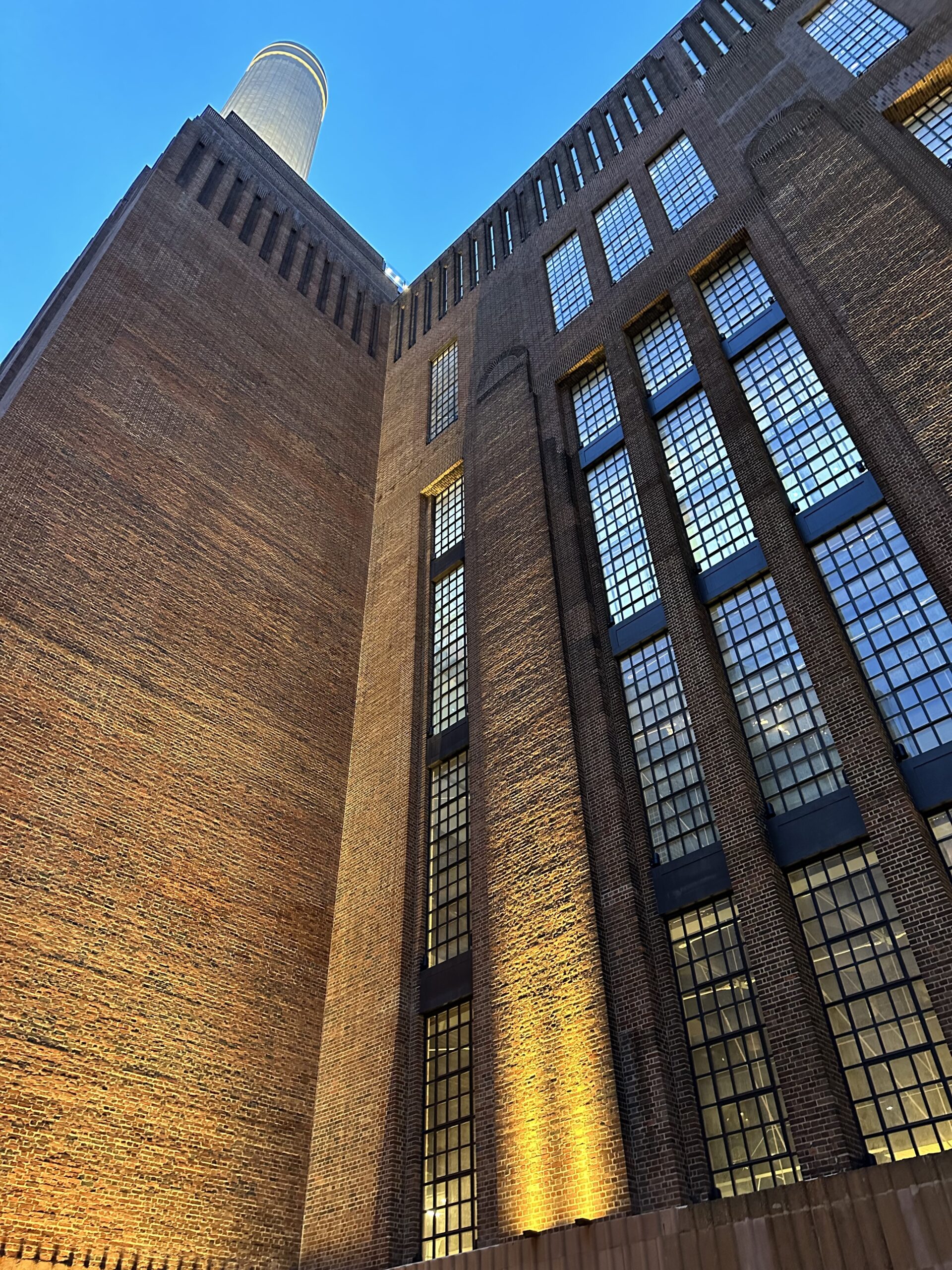

This unique London landmark, at 42 acres, is one of the world’s largest brick buildings. Famed for its Art Deco fittings and decor, this magnificent structure has finally been given a new lease of life after many years of doubt about its future. £9 billion has been pumped into this vast brick giant. But has it’s essence been retained and is it worth visiting?
The new complex offers a giant shopping mall on the lower floors, offices on the middle floor (residents include Apple), and luxury apartments on the upper floors (affordable housing represents 9% of the housing development surrounding the B.P.S).
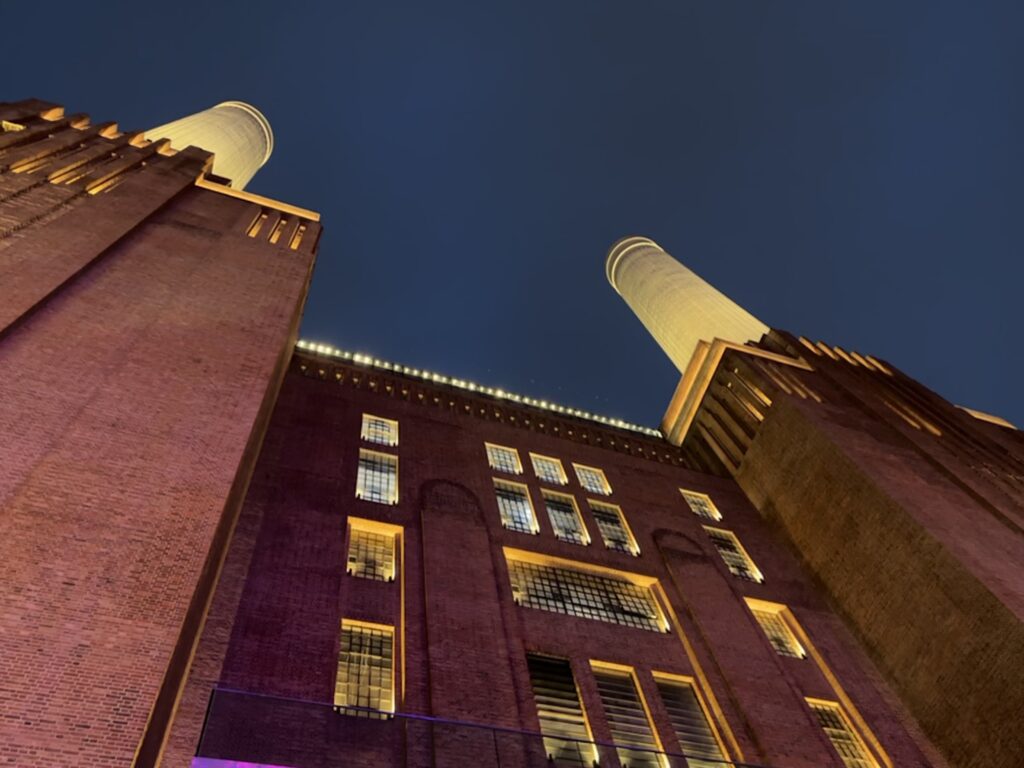
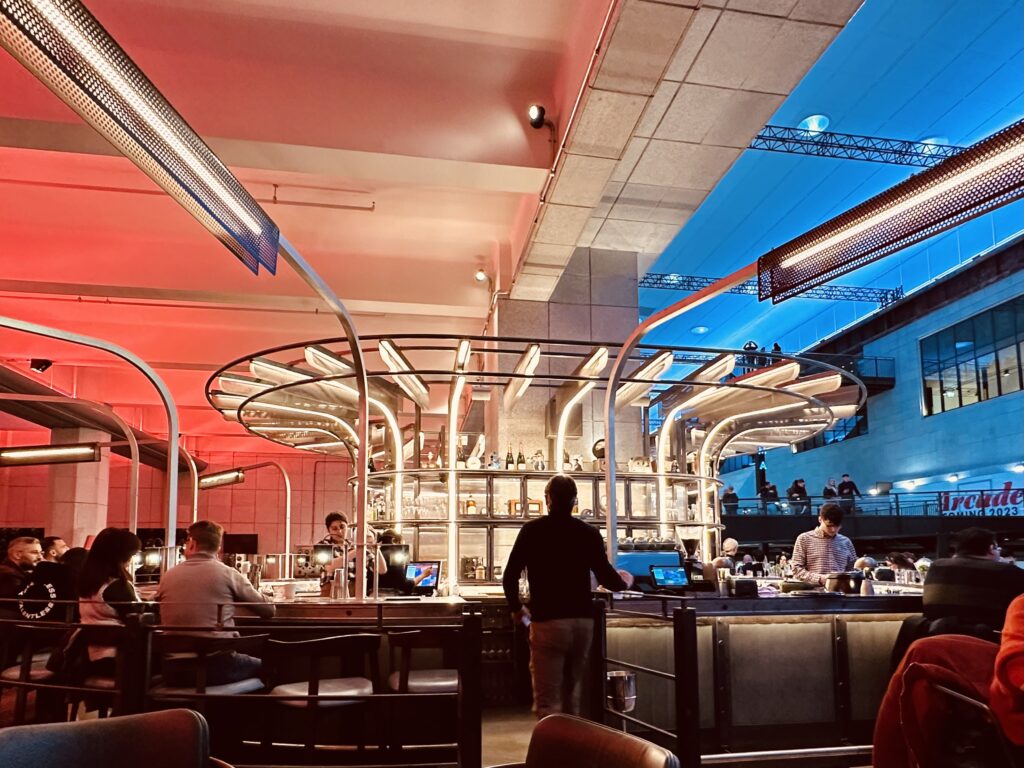
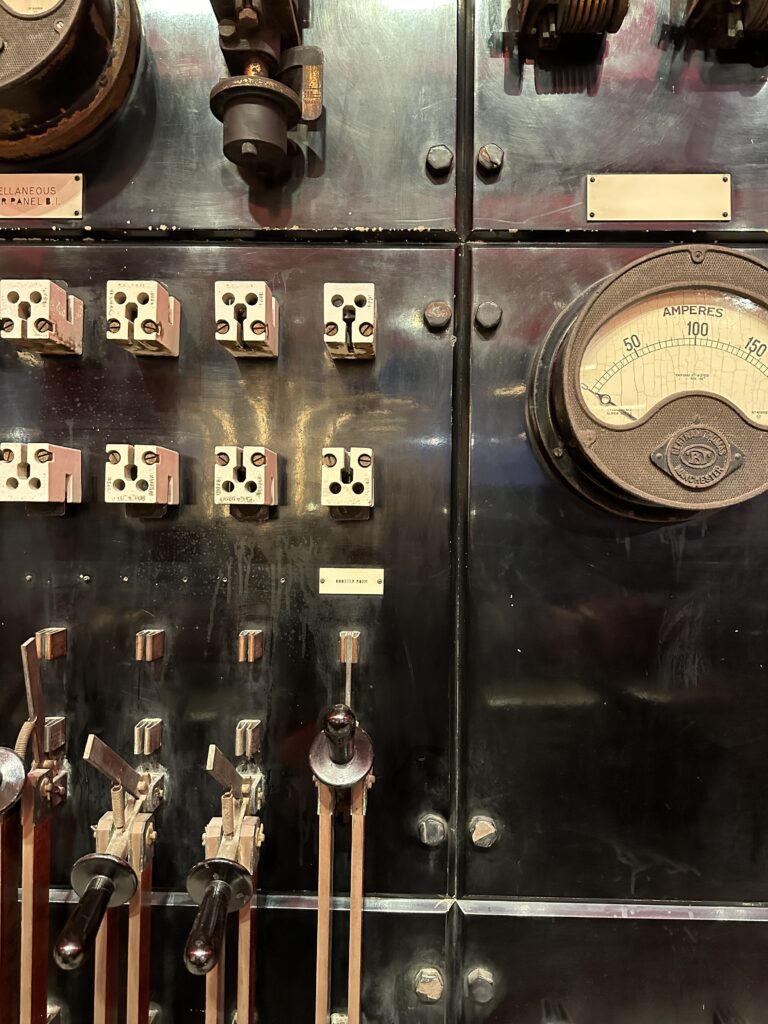
I arrive with ease on public transport (B.P.S is served by many buses and a new eponymously named tube station). Approaching along Prospect Way I get glimpses of the station’s four 109 metre high chimneys, up-lit against the dusk sky. Ironically the best view of the whole building is from the other side of the Thames – the intense housing development which surrounds the B.P.S makes it almost impossible to get a decent overall view from close by.
Originally designed by Leonard Pearce and Sir Giles Scott, the buildings’ architectural rebirth has been placed in the hands of WilkinsonEyre architects. I enter the shopping mall via the southern entrance and immediately encounter a cavernous, dramatic space.
The original construction materials of brick, tile and steel have either been lovingly restored or replaced. I appreciate the fact that the tiling companies involved during the original 1930s construction were re-employed to manufacture 1.8 million new tiles for the station. The buildings’ heritage and Art Deco style are palpable through the exposed brick wall both inside and out.
An exciting space is to be found at the sleekly designed public bar called Control Room B. It was one of two original control rooms at the B.P.S and operational from the 1950’s onwards. It is now a fascinating design mashup – part 1950s B-movie/diner, part Frankenstein’s laboratory, housing thousands of restored, original control dials and switches.
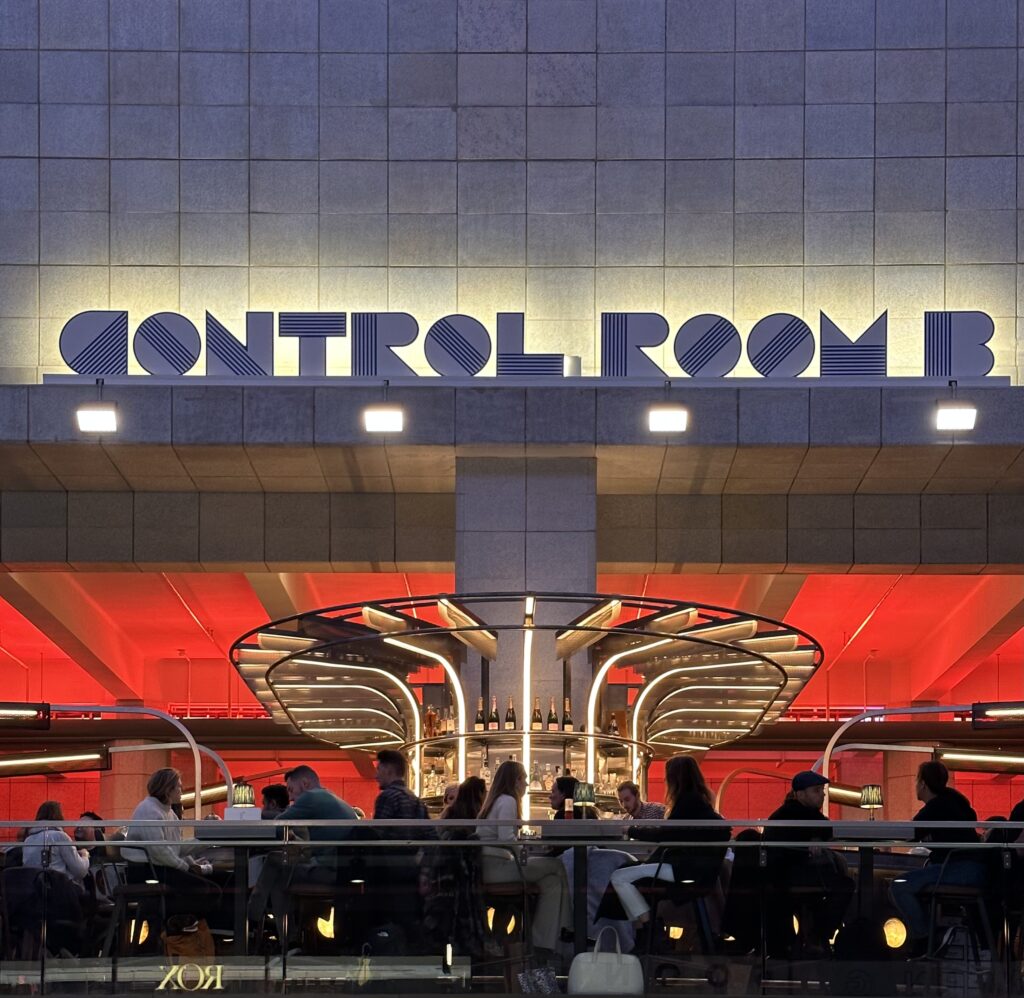
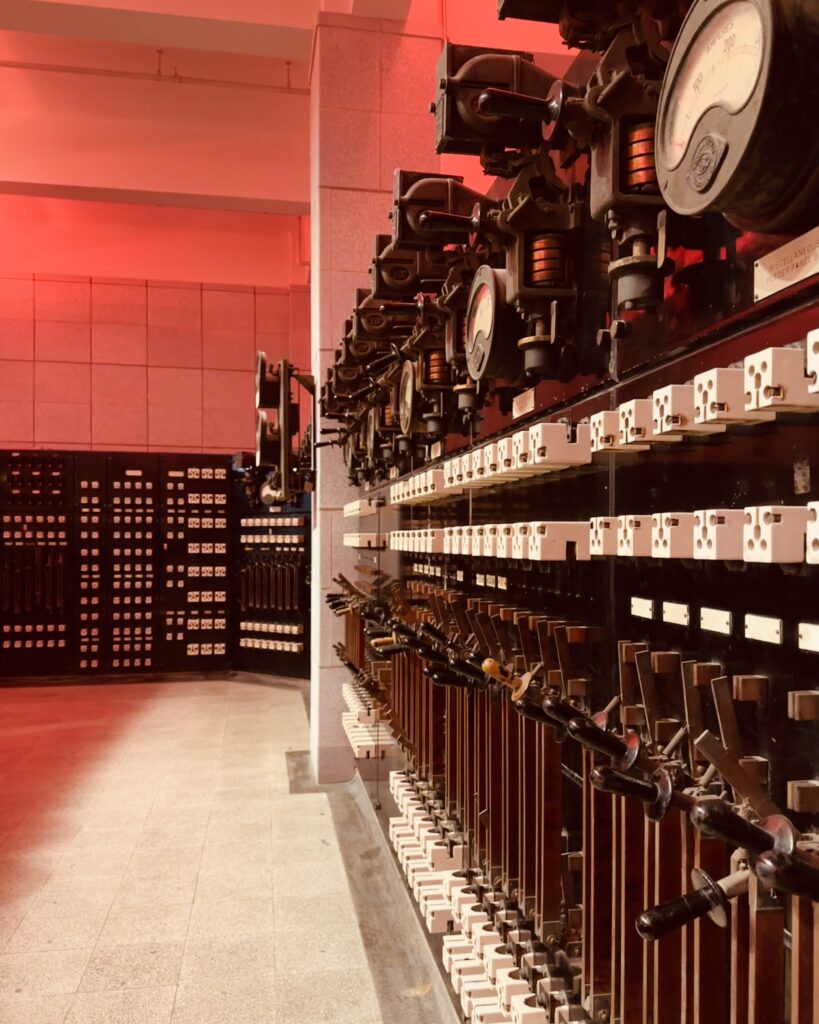
I felt as if I had entered a movie set – helped by the atmospheric lighting and the fact that the staff are dressed in white lab coats. I was able to take photos without having to queue to sit and purchase an electricity themed cocktail. The staff and security guard were welcoming and gracious – much appreciated. The visit to Control Room B ticked my experiential boxes, and it’s uniqueness was a definite highlight for me. Congratulations to Ellis Design studio for creating this inspirational space.
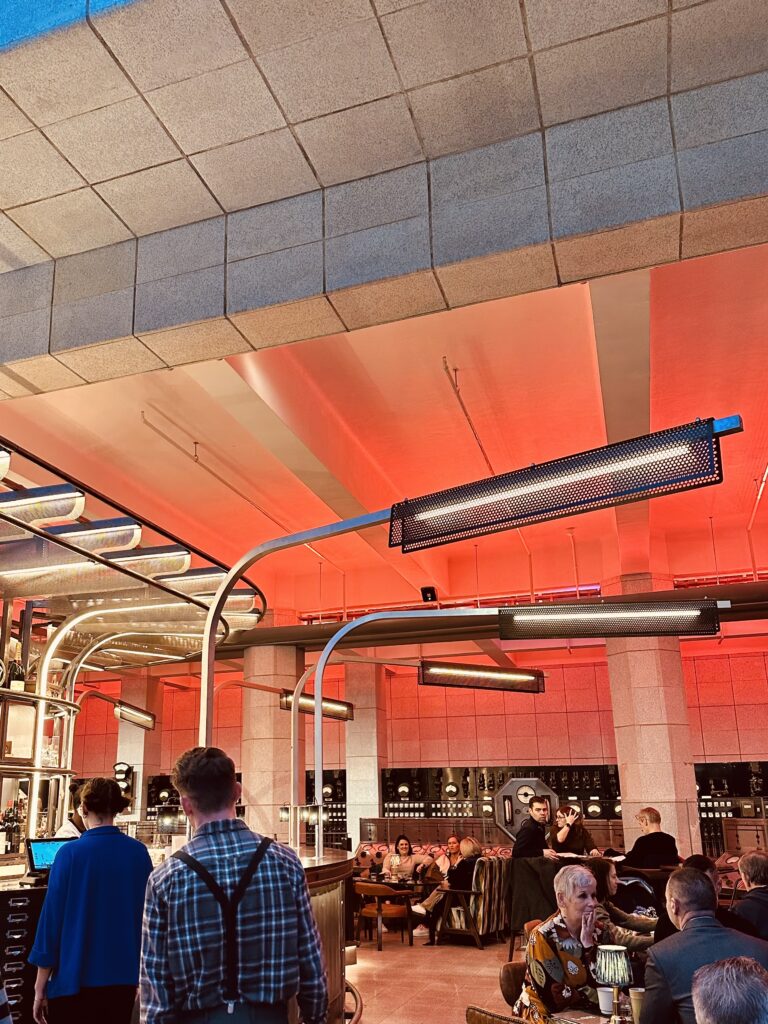
I have one criticism – the official website states that the site will “supply sustainable energy” then continues “heat and electricity…will be run on gas at high efficiency, generating energy with a vapour plume”. The last time I checked, Gas, highly efficient or otherwise, is not a sustainable fuel. This building could be looking towards the future, but nowhere on its website could I find any mention of renewable energy goals or plans.
Despite this criticism, I am delighted that the Battersea Power Station has been rescued from demolition and remains a jewel in London’s skyline. I recommend a visit, and if like me, it’s the architecture that interests you, then try and go in the morning or evening on a weekday to minimise distractions and crowds.
